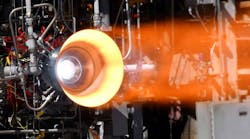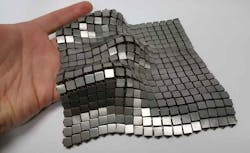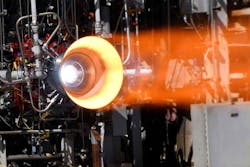Borrowing heavily from the principals set forth by Lipson and Kurman, my process engineering background, recent book research2, and with a bit of tongue in cheek, I put together my list of 11 Myths About Additive Manufacturing. In Part 1 I cover how complexity and variety aren’t free with other myths. In Part 2, we continue with Myths 7 through 11.
Myth 7: Compact portable manufacturing.
AM metal fabrication shops may have a smaller footprint than a conventional metal shop, but the AM shop may also be equipped with post-processing and finishing equipment, as well. Commercial systems are getting bigger all the time with larger build volumes, larger capacity post-processing equipment (e.g., heat treatment furnace, hot isostatic press, etc.), and support systems. Despite a trend toward meter scale AM metal there are still a wide range of applications such as dental and medical that could be considered portable. Advances are being made in bringing AM metal systems to the desktop and outfitting modular containerized system for transport to remote processing locations.
1. This metallic "space fabric" was created using 3D printed techniques that add different functionality to each side of the material. (Credit: NASA/JPL-Caltech)
Myth 8: AM uses less material, creates less waste, powder is 100% recyclable, and no jigs or fixtures are required.
In conventional fabrication, the “buy to fly” ratio, or the amount of metal purchased verses the amount within the final part can be as high as 9 to 1, as 90% of expensive superalloys may end up on the machine shop floor. As mentioned previously, the cost of premium AM metal powder can be double that of weld wire, which can be double that of wrought product.
In addition, when making these comparisons, the total cost of materials needed should include specialty inert gases, other process materials, and the cost of energy for both processing and post-processing. Less waste and material recycling is possible, but there is a waste stream of sieved powder particles, removed support structure, and limited lifetime hardware such as build plates.
Support structures are not only needed to support the part during the AM build, but may also serve as heat sinks during the build of small features, support the part during heat treatment to minimize distortion, and support the part during machining and inspection. In fact, you often both build and destroy your fixtures for each part produced. In addition, the process certification “jury” is still out regarding how many times unfused powder can be sieved and reused for critical applications such as aerospace parts or medical implants.
Myth 9: There are infinite types of materials, multi-materials, in-situ alloying, and metallic glass.
While more AM materials are being offered commercially, the number of AM materials and metal alloys are quite limited. Many commercial materials are specifically designed for the process being used such as casting alloys, free machining stainless steels, and specialty weld filler metals. We are more likely to see many more colors of 3D printing polymer filament before we see a wide range of certified super alloys specifically designed for AM metal fabrication.
2. NASA successfully hot-fire tested a 3D printed copper combustion chamber liner with an E-Beam Free Form Fabrication manufactured nickel-alloy jacket. (Credit: NASA/MSFC/David Olive)
The metallurgical considerations associated with applications of functional graded materials, in-situ alloying, and amorphous glass-like metals are poorly understood. Few technology demonstrations exist outside academia and industrial applications are likely to remain limited. Having said that, Fig. 2 shows the test firing of a rocket engine made using two AM metal technologies and multiple materials, 3D-printed copper, and electron beam EB-Free Form Fabrication of a nickel super alloy.
Myth 10: Precise digital replication, one-step processing.
I am all for precise digital replication, while hoping for error free, secure, cloud retrieval, and storage. However, precise process replication and physical replication using AM is but a dream. The physical world is full of process disturbances (gremlins) and product non-uniformity, discontinuities, and defects. It is not just a string of 0’s and 1’s. If you need precise physical representation, you will need to precision machine the entire part that means you are using at least two processing steps. Most all AM metal parts require some form of finishing or machining. Few AM metal parts are used in the as-built condition. Multiple steps are required; however, in some cases the factory footprint and number of steps may be reduced.
Myth 11: 3D printing and additive manufacturing will disrupt manufacturing and product design, and will transform manufacturing, leading the next Industrial Revolution.
A disruptive technology does not just shrink exiting barriers of time, cost, or skill: It leapfrogs or completely re-imagines or re-defines the need, bringing solutions from an entirely new direction. 3D printing and AM were born at the convergence of multiple evolving technologies (digital design, advanced materials, computerized machine control, information technology). These and other technologies such as robotics and AI will all see rapid advances including those tailored to the needs of AM.
With wider adoption, AM will continue to evolve. However, I believe that in 50 years many of the core manufacturing technologies of today will still be in place. AM in its many forms will become a new and powerful tool in the manufacturing toolbox. Exciting new AM materials and processes are being brought to the desktop. Large complex objects fabricated at meter scale are being demonstrated for use by heavy industry. The future is bright for additive manufacturing.
The true disruption and transformation of manufacturing and construction will occur in space where every aspect of current manufacturing technology will be examined and recreated, starting with a “clean slate” and a new dream.
References
- Fabricated: The New World of 3D Printing, Hod Lipson, Melba Kurman, ISBN: 978-1-118-35063-8, February 2013.
- Additive Manufacturing of Metals From Fundamental Technology to Rocket Nozzles, Medical Implants, and Custom Jewelry, John O. Milewski, Springer Series in Materials Science 258, 2017, DOI 10.1007/978-3-319-58205-4.
- “Rocket Engine Injector Manufactured With 3-D Printing Machine,” July 23, 2013, accessed 12/12/2018.



